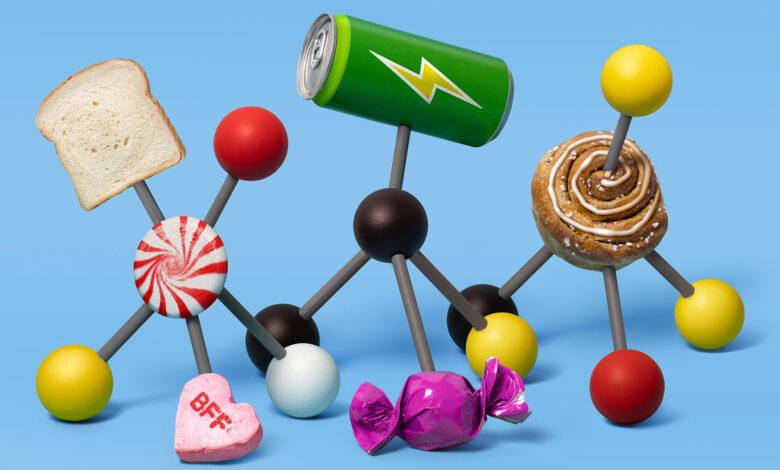
Have you ever looked at the labels on the food you buy, on the detergents, sunscreens, toothpaste etc.? Perhaps you should. I certainly know I will. There are an endless amount of unpronounceable ingredients in every single one. In fact, almost everything you put in/on your body could be detrimental to your health.
So what will it be? Take the blue pill and continue living in blissful ignorance; or take the red pill and open your world to all the new possibilities of healthy living. This article aims to illuminate the straightforward yet powerful choices that can lead to profound wellness, often overshadowed by the cacophony of modern medicine’s complex interventions.
Changing the way we eat or going to the gym can be quite daunting for those who have never tried to. However, it’s a lot easier than people think. Not to mention, it’s well worth your time. Small changes can have huge impacts on your health, and for some, it’s as easy as cutting soda. It wasn’t long ago that I ate whatever I wanted and rarely exercised. After making changes in my life, I found that a lot of it was rooted in my diet. All those headaches that I complained about could be solved by drinking water instead of drinking Starbucks Frappuccinos and popping Advil.
Achieving wellness consists of a delicate balance of healthy eating, exercising, and chemical limitations. As eating right and exercising varies by person, I want to focus on the changes we can all make to limit harmful ingredients going into our body. I made a compilation of what I have learned over the years.
It’s important to remember that a lot of food in America is altered and/or processed. The foods in Europe have quite different results than that of the United States. It’s fascinating to look at the ingredients that are banned in Europe compared to here. The FDA, the United States Food and Drug Administration, is not particularly strict when it comes to chemical limitations, so make sure to look at your ingredients. For example, fruits are often covered in harmful pesticides to protect against bugs. I found that a lot of the ingredients in foods today are a contributor to infertility, one of them being pesticides. The best way to prevent exposure is to wash them in baking soda or vinegar. Nothing is quite as satisfying as seeing all the gunk come off grapes leaving them fresh and shiny.
The meat industry is also quite flawed. Our meats can be lab-grown, injected with hormones, and washed in chlorine. Have you seen the videos of people squishing their fish like a sponge? Meat is definitely not supposed to do that. New food creations like this are why the organic movement has grown so much over the past decade.
However, organic does not necessarily mean good for you. This label is missing a few critical aspects. Organic can still be processed. These foods are still created by large-scale manufacturers whose concern is money, not giving the consumer quality ingredients. It may not be killing you, but it’s definitely killing your wallet. You are probably paying a lot of money for foods that are barely better.
Sometimes the old methods are old for a reason. We don’t only use manure to grow crops anymore, because it has dangerous bacteria that can get into the water if it is not properly separated. We also don’t drink raw milk due to the bacteria in it from fecal matter. However, if it is properly handled raw milk can have added health benefits.
In addition, the labels for organic foods are inconclusive. Cage-free sounds humane, but that could mean chickens are kept in tight, indoor living conditions. Because they don’t get to see the light of day, they don’t eat the worms that allow their eggs to have more minerals. This causes the change in color of the egg from dark gold to bright yellow. I’ve noticed that the $8 organic eggs have the same coloring as the $4 non-organic ones. Another label, Pasture-raised, suggests lush outdoor living conditions. Unfortunately, that could mean the cows spend only an hour outside.
Another label on milk to look out for is A1 vs A2 milk. The A1 protein, originating from cows of European descent, causes gastric pain and inflammation. Actual lactose intolerance is more uncommon than perceived due to the introduction of this protein. This is why a large population of Asian descent has lactose intolerance. They are accustomed to the A2 protein from cows of Asian and African descent. This is a good tid- bit to keep in mind, because I know I’d be furious if I was wrongfully prevented from eating cheese.
Natural flavors are another surprising ingredient. This may seem harmless, compared to the alternative of artificial flavors, however, this label has a very loose definition. Natural flavors are derived from plant or animal materials. However, “natural” includes chemicals like ethanol and ingredients derived from genetically modified crops.
For those who love Lucky Charms or Fruity Pebbles, I have bad news for you. Food dyes are carcinogenic. While in Europe these colorful additives are banned, they are still going strong in the United States. The coloring in the marshmallows can cause hypersensitivity and genotoxicity. Over the past couple of years many companies have decided to stop using these dyes due to the amount of lawsuits against them. It may be beneficial to consider what exactly these ingredients can do to your child. Does your child have behavioral problems or could it be the food?
Overall, you want to avoid simple carbs and sugars. If you are like me, and can’t resist a delicious baked good, then opt for whole grains. Keep in mind bread is made differently in the United States. My mom, who is gluten intolerant, can handle European bread much better than that of the United States. Now she makes her own sourdough and can eat it without any problems.
A great pasta equivalent is protein pasta made from legumes like Banza or Barilla. Barilla may be a better option as it does not have xanthan gum, the artificial glue that binds food together. If you can, get your hands on a Costco membership, as they sell Banza in bulk.
If you have a sweet tooth, then eat fruit to avoid added sugars. There are so many sugary drinks out there that are keeping you from your diet goals. Don’t drink the Kool-Aid. I mean that literally and figuratively. Fruit juices may seem like a healthy option, but often they are packed with sugar and chemicals. Be on the lookout for a current case against Coca-Cola’s Simply Orange. Besides the 160 g of sugar in a 1.5-liter bottle, the brand has a lawsuit for having too much PFAS. These are chemicals made to resist water, grease, oil, and heat.
In the end, water is the only liquid you need, but make sure you know its source. Plastic bottles leave microplastics in your water. On top of that, tap water goes through old, rusted pipes leaving behind all kinds of contaminants. I recommend getting a half-gallon water bottle and a high quality filtration system. This will be costly, but keep in mind it’s important for your long-run health.
There is another issue besides the food we eat. What we cook our food in can also have dangerous effects. Non-stick cookware also has PFAS. Generally, it’s best to cook in stainless steel, cast iron, lead-free ceramic, and glass. Try not to put leftovers in plastic containers, because microplastics can melt into your food! Speaking of microplastics, they are also used in dishwasher pods alongside a variety of other chemicals. Once I realized detergents have harmful chemicals, I started researching simple, all natural ingredients to clean.
After clearing up my diet, my hair and skin looked healthier. I spent the majority of my life covering my arms to hide these little red bumps. Little did I know, the cause of the bumps was my diet. As soon as I got rid of the processed foods, the bumps were gone and my acne cleared. On top of that, I stopped having frequent stomach aches.
I know this was a lot of information, and it’s going to take a lot of time to implement these changes. However, one change is better than nothing. Over time it will all add up. I slowly started to switch out foods, cleaning products, candles, and cookware. Someday I hope to have fancy water filtration systems and quality 100% cotton clothing. It became a habit of mine to scan all the barcodes with the Yuca app. I live by this app. It lists all the ingredients and describes which ones are harmful. There are plenty of other useful tools out there to help you make these changes.
You only live one life, and it’s your duty to live it to the fullest. Don’t let large government corporations trick you into buying harmful foods and making a profit off the carnage.
I hope these tips give you some peace of mind and mental clarity. All this work will pay off over time, so stick with it!


